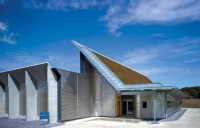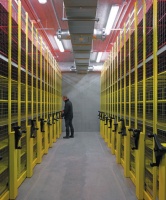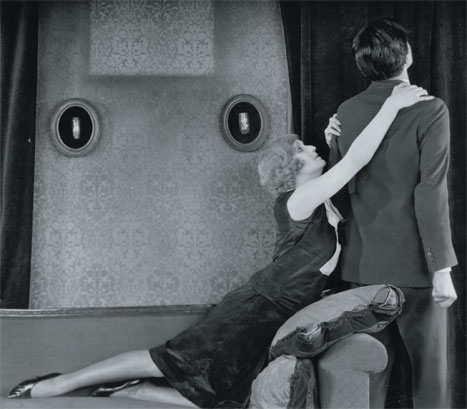Hidden away among the rolling hills of Warwickshire is a seemingly innocuous building that stands proudly against its wooded backdrop. Once part of a military installation, the site has been remodelled to house one of the country’s most important structures for cultural heritage - the British Film Institute’s (BFI’s) Master Film Store.

While it might appear tranquil on the outside, within, control systems in sub-zero vaults are working constantly to preserve 450,000 canisters of archived film footage dating as far back as 1895. The treasure chest includes film prints from the early works of Mitchell and Kenyon to Hitchcock’s masterpieces and The King’s Speech.
Unfortunately, most of these films are under serious threat of destruction. If left unprotected, just one stray spark could turn the entire archive into a ball of fire within seconds. This is because the majority of films made between 1889 and the mid-1920s are nitrate-based. Once set alight, nitrate film is near impossible to put out. Its chemical make-up includes oxygen, so it can continue to burn even if it is submerged in water.

The basic structure is made up of six large acetate cells down the centre of the building, bordered by 30 smaller nitrate cells. At just under 3,000m’ in total, the new vaults not only meet strict environmental standards, but are also fire proof and able to maintain a constant temperature of -5°C and a 35 per cent relative humidity.
Part of this is down to the use of pre-cast concrete panels throughout the building, which are highly insulated. External to the insulation the building is wrapped with a continuous vapour barrier that helps prevent moisture ingress and condensation. This layer helps in meeting the air-tightness of 0.28m³/m²/hr at 50 Pascals, which equates to 0.03 air changes per hour.
As well as providing insulation, the pre-cast concrete walls prevent the transfer of heat during a fire. A number of large pressure-relief panels, 11m² in area, with stainless steel cladding and layered hydrocarbon insulation have also been included. These automatically open in the event of a fire within the cell, letting it burn clean and limiting damage to one area.
’The important factor is that the building envelope has been heavily engineered with a lot of mass involved to stabilise the base,’ said, Simon Seaton-Smith, director of CPW. ’This also makes sure that we don’t leak air out of the space, because that also brings air back in, which brings moisture. Insulation, mass and air tightness were all explored in terms of thermal modeling to make sure we could achieve a low-energy building.’
We were in the position that unless something radical was done, we would lose the entire collection
Four industrial chillers, four dehumidification units and 12 air-handling units deliver the strict temperature and humidity controls. The chillers and dehumidification plant have heat-recovery systems that pre-heat the air required for dehumidification, saving 15 per cent of energy usage. If power is lost, engineers predict that the building can maintain the collection at below freezing temperature for up to three days in the middle of summer.

According to the BFI, the energy consumption of the new building will be less than 1,200,00kWh per annum saving more than £330,000 in annual energy costs and more than 1,500 tonnes of carbon, when compared to refurbishing the existing 1979 and 1999 buildings to the same environ- mental conditions. There are also a number of ecology features that the BFI is particularly proud of, such as a bat roost built in an old Ministry of Defence bunker, measures to protect Great Crested Newts and the installation of a sedum blanket roof system.
’The building is more than pioneering, it’s controversial,’ said Ruth Kelly, head of Collections and Information. ’When we first came up with the idea to stop copying things, and instead preserve them, there was an outcry. Copying is what people have always been doing, it’s what they are used to. The entire archive world was divided. But I really believe this is the way forward and I think many other people now feel the same.’
In 2007, then culture secretary James Purnell said: ’The BFI archive is a national treasure. It is arguably the finest film and television archive anywhere in the world… It is safe in our hands.’
The widely held consensus at the BFI, according to Stewart, is that there is still a lot more work to be done for this to happen. The new Master Film Store is the first step towards this goal and if the design performs as planned it will be a vital ingredient in helping to preserve our valuable film history.
Project data
The archive is designed to protect delicate film from the elements
Design team appointed: July 2009
Construction cost: £9m
Cost per m²: £3,000
Main sub-zero store: Pre-cast concrete panels for thermal mass and hydroscopic performance.
Suspended slab to prevent frost heave.
Cold applied bitumen sheets membrane for slab, walls and roof for air/vapour tight barrier.
Floor and walls to store 200mm of rigid Kingspan Insulation; Sedum-covered roof.
Storage volume: Designed to accommodate 458,460 cans; (190,080 nitrate; 268,380 acetate).
Total length of shelving = 27,442m (17 miles).
30 nitrate cells - 7.7 x 3.5m (17,712m of shelving).
Six acetate (safety film) cells - 19.0 x 9.4m (9,730m of shelving). Headroom in all cells (3.6m).




Glasgow trial explores AR cues for autonomous road safety
They've ploughed into a few vulnerable road users in the past. Making that less likely will make it spectacularly easy to stop the traffic for...